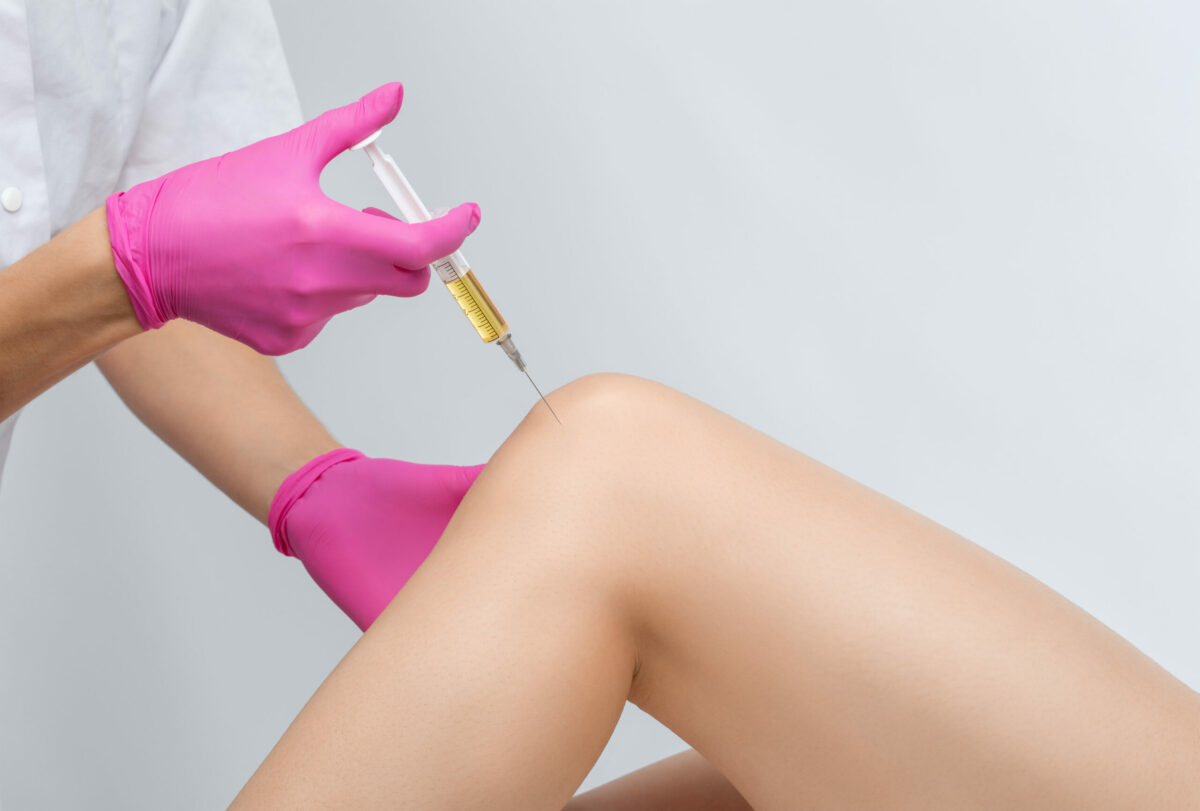
Are you experiencing joint, muscle, or chronic pain and seeking pain-management solutions? Then you have probably heard of both cortisone injections and platelet-rich plasma (PRP) injections. But which one is the right choice for your condition?
Whether you are looking for types of injections for back pain, types of neck injections, or injections to help with any chronic pain, these two options can provide relief. Cortisone and PRP injections are designed to treat joint damage or muscle pain. Cortisone is an anti-inflammatory steroid that can be injected directly into the site of pain. PRP involves taking a sample of your blood, separating its platelet-rich plasma, and then re-injecting it back into the affected area.
Both injection-therapy treatments have been proven to be effective at minimizing short-term pain in certain patients. However, they differ significantly in terms of their effects on long-term health and overall effectiveness, and a recent clinical study indicates that PRP shots show “significant superior and sustained pain-relieving and functional improvements compared” to cortisone injections. PRP shots are more effective at reducing inflammation and promoting healing, while cortisone shots can provide short-term relief but may cause long-term damage to the joint or muscle.
What are Cortisone Injections?
Cortisone shots are a type of steroid injection that can be used to treat joint or muscle pain and offer pain relief. They are a popular medical treatment administered to millions suffering from severe joint pain or tendinitis. The injection process requires the cortisone treatment to be injected directly into the site of pain, where it works by reducing inflammation and providing short-term relief from pain.

Cortisone shots are commonly used to treat joint pain caused by arthritis, tendinitis, bursitis, and other chronic inflammatory conditions. Though they are considered a steroid, cortisone shots are used due to their highly potent anti-inflammatory properties, which can quickly reduce inflammation in tissues like tendons and joints.
What is a PRP Injection?
PRP shots are a form of regenerative medicine that uses the body’s healing power to treat joint and muscle pain. This injection technique is used as an alternative to cortisone shots. PRP is created by taking a sample of your blood, separating its platelet-rich plasma, and then re-injecting it back into the affected area. The platelets in PRP contain growth factors that can help to reduce inflammation and promote healing.
PRP shots can treat various joint and muscle pain conditions, including tendinitis, bursitis, arthritis, and ligament injuries, and are an excellent option for sports-related injuries. They can also help offer pain relief, reduce inflammation, and promote healing in areas damaged by trauma or surgery.
Key Differences
Though these two types of injections have similar qualities in pain relief, research indicates a greater long-term effect from PRP shots. With corticosteroids being as powerful as they are, physicians and other health-care professionals will limit the number of injections a patient receives due to potential adverse side effects caused by long-term usage; these include tissue thinning at the point of insertion alongside some weaker bones in older patients who had chronic use of it.
Regardless, cortisone injections provide instant gratification and a “quick-fix” healing process to problematic pain that is caused by inflammation. Treating individuals with weak muscular strength around inflamed tissue also gives those responsible for rehabbing them enough time to strengthen said area without agonizing pain on every rep along their journey to recovery.
Perhaps the most significant is that PRP therapy helps a patient recover from their injury because it reduces pain and begins healing the injured area right away. Unlike cortisone injections, which merely mask pain symptoms, PRP treatment has healing properties that spur cellular growth and tissue regeneration, slowly rebuilding the injured area over time.
So while cortisone shots offer temporary relief, they shut down healing altogether, limiting movement to mask stress-related tension that can cause harmful side effects. A PRP shot helps to gradually restore balance as it soothes nerve sensations associated with chronic conditions like tennis elbow, carpal tunnel syndrome, or arthritis. The two areas corticosteroids help with–pain and inflammation–are elements that encourage the body to heal itself. Pain restricts movement, preventing further injury and making PRP treatment more suitable for long-term health due to its regenerative qualities on soft tissues.
Emerge Stronger, Healthier, and Better
PRP and cortisone shots can be used to treat joint and muscle pain, but PRP shots can potentially have greater long-term effects. Cortisone injections provide instant relief from pain, but they do not promote healing in the affected area and may require more shots months after injection. PRP therapy, on the other hand, helps to reduce inflammation and encourages tissue healing, which can lead to a complete recovery.
If you have pain and are interested in learning more about the types of injections that will better suit your individual needs. We encourage you to request an appointment, self-schedule an appointment, or call us any time at (919) 220-5255, so our specialists can help you emerge stronger, healthier, and better.







